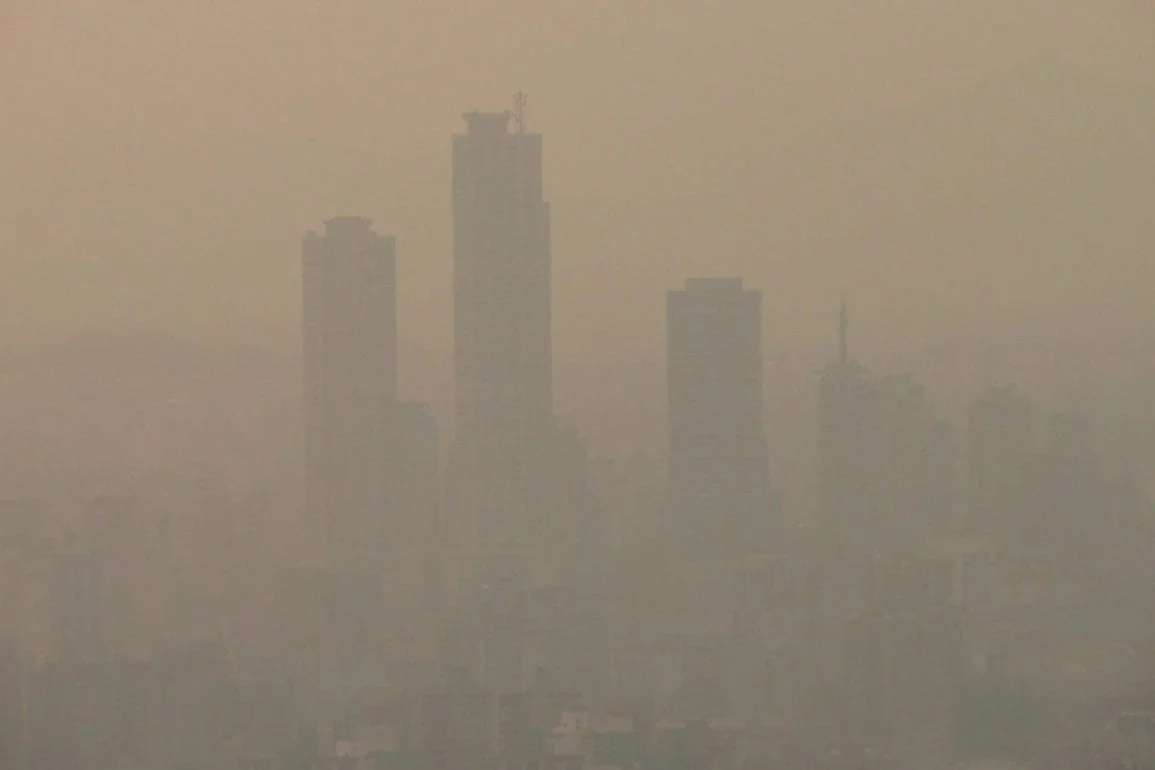Yellow dust originates from the dry desert regions of China and Mongolia where winds pick up fine sand particles and blow them across the continent. This has been occurring for many generations, but with the increased deforestation in the area, the amount of dust has also been increasing.
To make matters worse, the high levels of pollution in China means that these dust particles absorb hazardous materials as they blow across the country and towards South Korea. Add this to the pollution from Korea’s own factories and you have dangerous levels of pollutants filling the air.
These pollutants irritate the eyes, nose, mouth, throat, any existing respiratory problems, and can even damage sensitive electronic equipment. That is why it is important to protect yourself as this problem continues to escalate.
You can see the current air quality levels by visiting http://aqicn.org/map/southkorea/
Dust Masks
Yellow dust masks (황사마스크) are available in many shapes, sizes, and filter grades across Korea. Even if you aren’t part of the “sensitive groups” that would be most affected by the pollutant, the health risks can still be quite high. In many cases, it is better to be prepared than to venture out into the hazardous pollution unprotected. Luckily, there are disposable dust masks that you can purchase to protect yourself from breathing in these fine particles that can work their way into your blood stream.
There are tons of different dust masks available so it can be a bit confusing as to which ones will give you the best protection for the lowest financial cost. Here is a simple guide to dust masks available in Korea.
Single-use masks
Cloth and Surgical Masks:
Cloth and surgical masks are not adequate enough to filter out the fine yellow dust and pollutant particles. If your goal is to protect yourself from the pollution, these masks are to be avoided.
N95 Masks:


The US-based National Institute for Occupational Safety and Health (NIOSH) gives masks the N95 rating for being able to filter out 95% of particulate matter. There are also N99 masks that filter out over 99% of particulate matter, but these are more expensive and can be difficult to find.
Examples: 3M 9501, 3M 8110S, 3M 8210, 3M 9210
KF80/KF94/KF99 Masks:


KF (Korea Filter) masks more closely adhere with the European Standard rating system.
KF80 masks are equivalent to P1 filtration and filter out 80% of particulate matter.
KF94 masks are equivalent to P2 filtration and filter out 94% of particulate matter.
KF99 masks are equivalent to P3 filtration and filter out 99% of particulate matter.
Fit:
Generally speaking, masks that have elastic that stretches behind the head are preferable to those that secure themselves by stretching behind the ears only. The Singapore Ministry of Health has this handy document to show the proper method of securing the N95 mask.
Respirator:
Some of the more expensive masks come with a respirator built-in. This simply allows for more natural breathing and is not necessary for most people. If you are trying to save money, you can pass on the masks with respirators.
Use:
Remember, these masks are meant to be disposable and using them repeatedly only decreases their effectiveness and you will end up breathing in the pollutants even with the mask on. Most KF masks are meant to be used only once before being disposed of. Some of the N95 rated 3M masks have been tested to be effective for a few days, but the longer you use them the less effective they become.
Where to buy:
With the increasing concerns over air quality in Korea, dust masks are becoming more and more widely available. They can often be found at your local pharmacy (약국) and at larger department stores like Emart and Homeplus for just a couple thousand won. Of course they are also readily available online if you check Coupang or Gmarket and can be purchased in bulk.

For the more stylish ones you can get the Printed Mouth Mask here, be warned that these do not protect you as much as the legitimate filter face masks.
Reusable masks
Masks companies have started making custom-made and reusables masks, that can be worn for months and washed. Only a few companies have started selling reusable masks, so you can find them mostly online. Those reusable masks are as good to filter fine particles than the previously listed masks. Here are 2 brands you can buy them from:
Vogmask
Based in San Francisco, the company is selling various masks that adapt to all needs and concerns: sport, allergies, poor air quality, travel, sensitive lungs, and workplace. Vogmask offers 3 different sizes to fit all features, and different colors and patterns. Prices start from 33 American dollars and they can be used between 3 to 6 months.
All masks have a 95% particle filter and Carbon filters that protect users from even particles as small as .3 microns such as dust, pollen, shavings, and air pollution. Masks also filter odors. You can get more information on Vogmask or shop on their website. You can also shop Vogmask on Korean websites such as Gmarket Global and Interpark.

Respro
Respro is a British brand selling reusable masks targeting the urban sports environment. Due to the increasing awareness of air quality, they diversified their brand to provide a solution to the pollution issue. Respro® Masks have different masks to fit any type of needs, but all of their pollution masks offers






